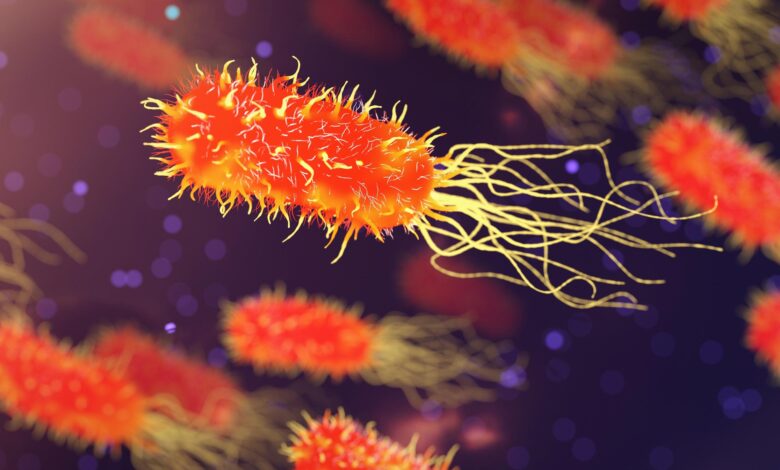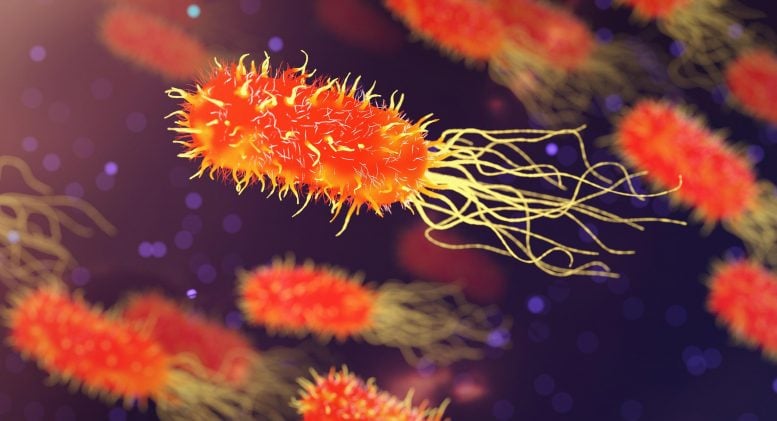Revolutionary Dual Action Antibiotic Makes Bacterial Resistance Nearly Impossible


Researchers have developed a new class of synthetic antibiotics called macrolones that target both protein production and DNA structure in bacteria, making it exceedingly difficult for bacteria to develop resistance. Their research shows that by disrupting two cellular targets simultaneously, macrolones could significantly impede the evolution of drug-resistant bacteria.
A groundbreaking study from the University of Illinois Chicago unveils macrolones, a new type of antibiotic that targets bacteria in two ways, drastically reducing the potential for resistance and marking a significant step forward in infectious disease treatment.
A newly discovered antibiotic, which targets two different cellular mechanisms, could make it 100 million times harder for bacteria to develop resistance, according to recent research from the University of Illinois Chicago.
For a new paper in Nature Chemical Biology, researchers probed how a class of synthetic drugs called macrolones disrupt bacterial cell function to fight infectious diseases. Their experiments demonstrate that macrolones can work two different ways – either by interfering with protein production or corrupting DNA structure.
Because bacteria would need to implement defenses to both attacks simultaneously, the researchers calculated that drug resistance is nearly impossible.
“The beauty of this antibiotic is that it kills through two different targets in bacteria,” said Alexander Mankin, distinguished professor of pharmaceutical sciences at UIC. “If the antibiotic hits both targets at the same concentration, then the bacteria lose their ability to become resistant via the acquisition of random mutations in any of the two targets.”
Macrolones are synthetic antibiotics that combine the structures of two widely used antibiotics with different mechanisms. Macrolides, such as erythromycin, block the ribosome, the protein manufacturing factories of the cell. Fluoroquinolones, such as ciprofloxacin, target a bacteria-specific enzyme called DNA gyrase.
Research Findings on Macrolones
Two UIC laboratories led by Yury Polikanov, associate professor of biological sciences, and Mankin and Nora Vázquez-Laslop, research professor of pharmacy, examined the cellular activity of different macrolone drugs.
Polikanov’s group, which specializes in structural biology, studied how these drugs interact with the ribosome, finding that they bind more tightly than traditional macrolides. The macrolones were even capable of binding and blocking ribosomes from macrolide-resistant bacterial strains and failed to trigger the activation of resistance genes.
Other experiments tested whether the macrolone drugs preferentially inhibited the ribosome or the DNA gyrase enzymes at various doses. While many designs were better at blocking one target or another, one that interfered with both at its lowest effective dose stood out as the most promising candidate.
“By basically hitting two targets at the same concentration, the advantage is that you make it almost impossible for the bacteria to easily come up with a simple genetic defense,” Polikanov said.
The study also reflects the interdisciplinary collaboration at the UIC Molecular Biology Research Building, where researchers from the colleges of medicine, pharmacy, and liberal arts and sciences share neighboring laboratories and drive basic science discoveries like this one, the authors said.
“The main outcome from all of this work is the understanding of how we need to go forward,” Mankin said. “And the understanding that we’re giving to chemists is that you need to optimize these macrolones to hit both targets.”
Reference: “Macrolones target bacterial ribosomes and DNA gyrase and can evade resistance mechanisms” by Elena V. Aleksandrova, Cong-Xuan Ma, Dorota Klepacki, Faezeh Alizadeh, Nora Vázquez-Laslop, Jian-Hua Liang, Yury S. Polikanov and Alexander S. Mankin, 22 July 2024, Nature Chemical Biology.
DOI: 10.1038/s41589-024-01685-3
The study was funded by the National Institute of General Medical Sciences, the National Institute of Allergy and Infectious Diseases, the National Key Research and Development Program of China, and the National Natural Science Foundation of China.
In addition to Mankin, Polikanov and Vázquez-Laslop, UIC co-authors on the paper include Elena Aleksandrova, Dorota Klepacki and Faezeh Alizadeh.



